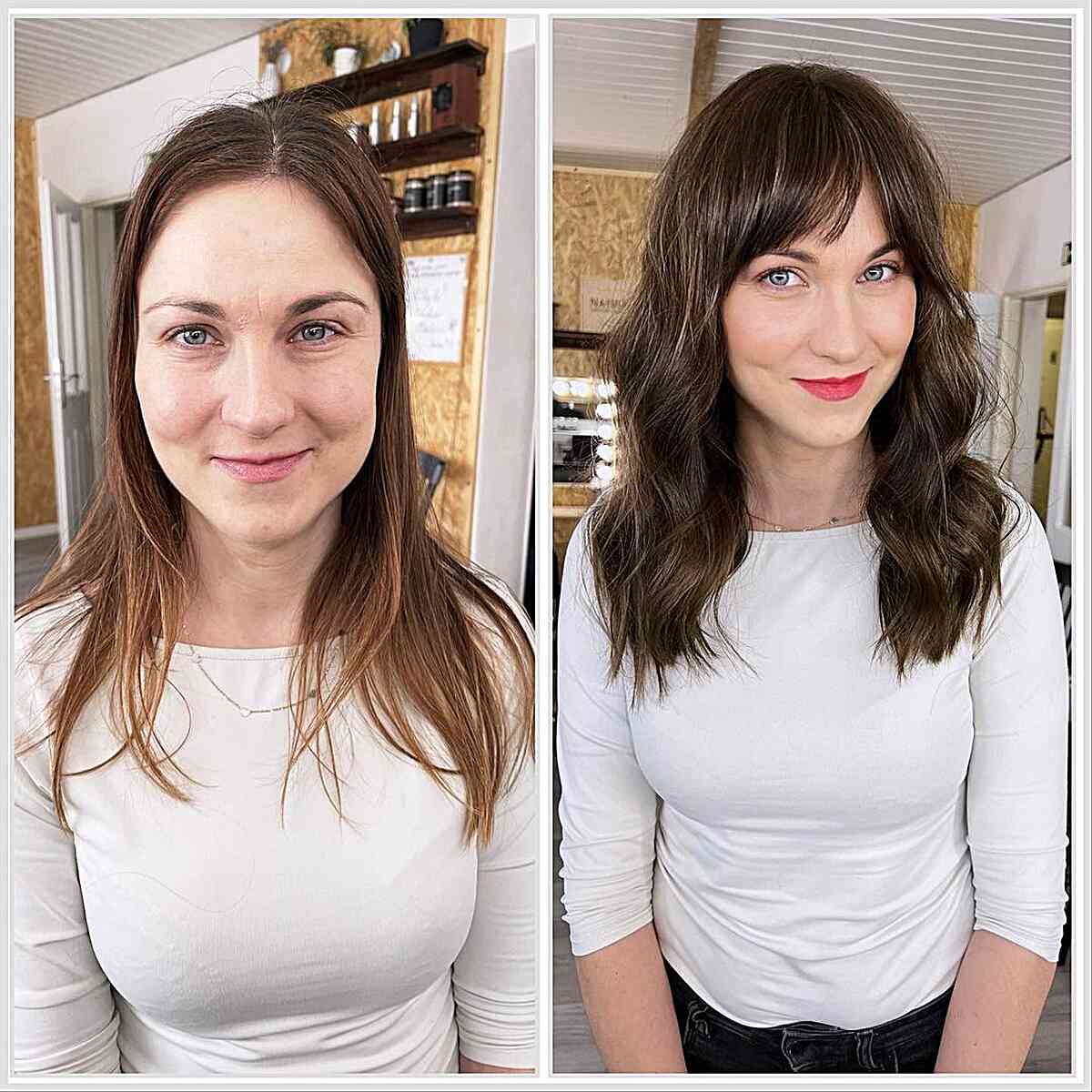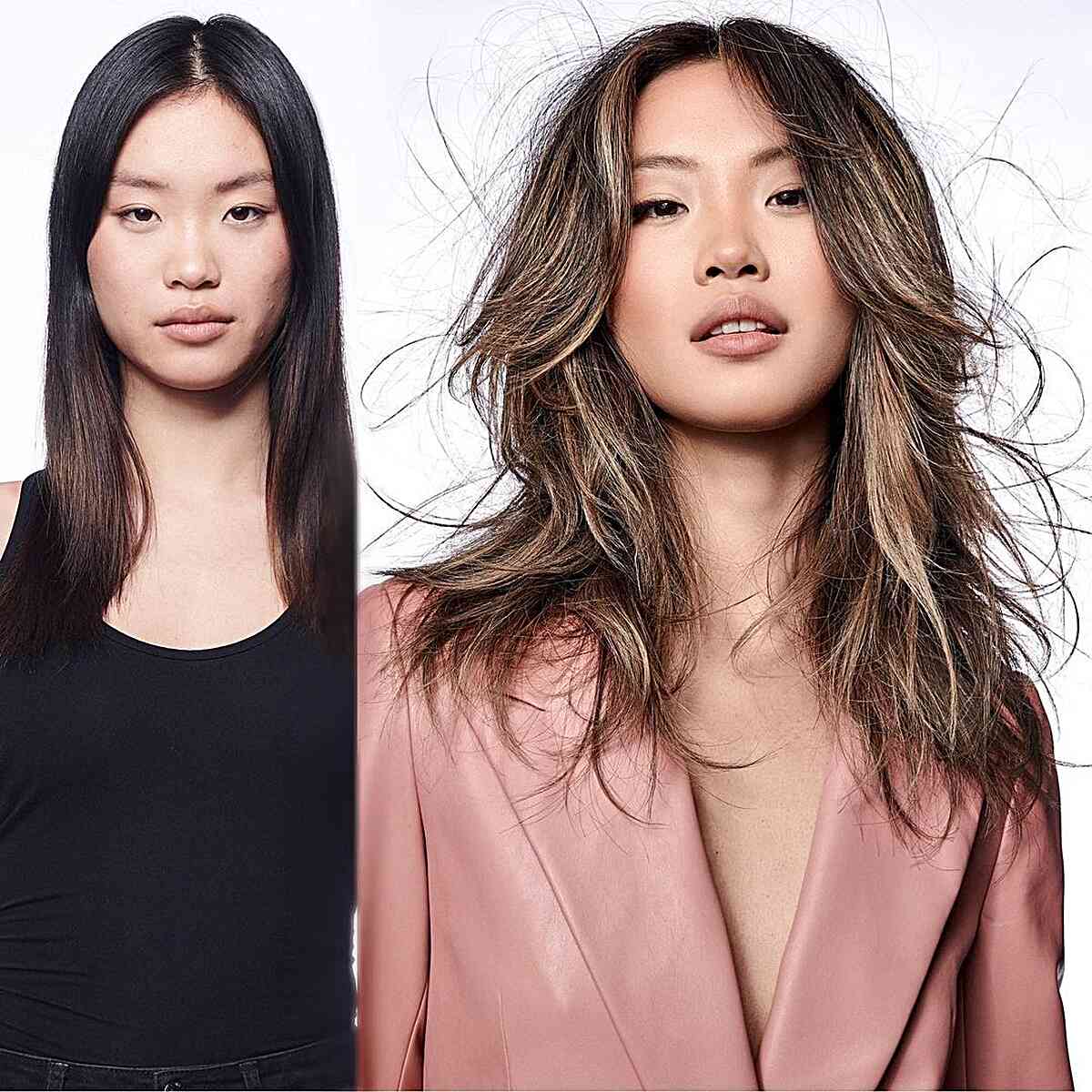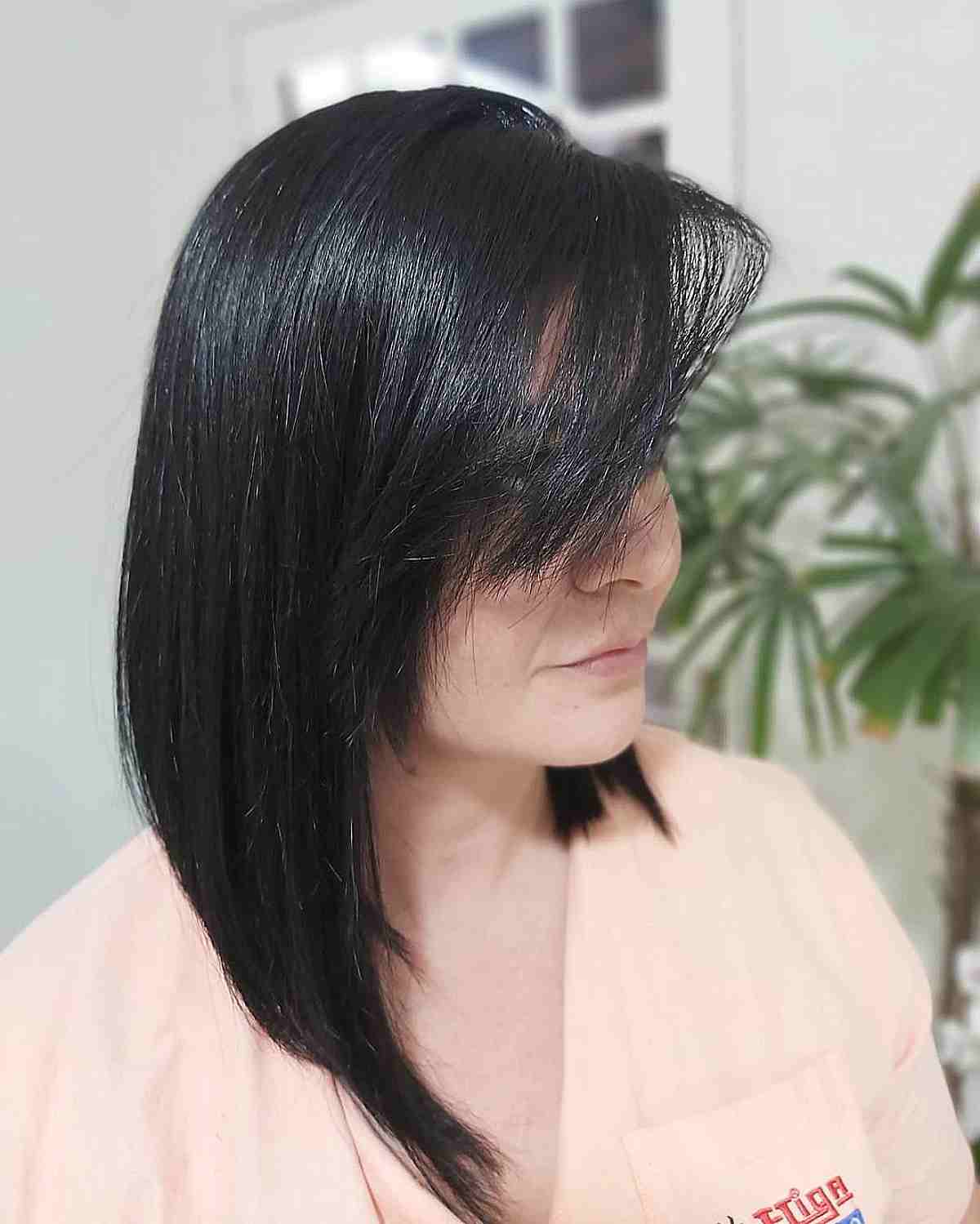“Thin” is frequently regarded as a compliment… except when it comes to hair. This term carries a vastly different implication if you’re a woman with fine hair!
I’m a hairdresser, but fine hair is prevalent in my family. I’ve dedicated my career to understanding and experimenting with the best haircuts for women with fine hair. With this hair type, you’ve got numerous challenges to tackle.
And it can be frustrating to find the appropriate haircut and the right products.
But don’t fret! In just a few minutes, you’ll become an authority in selecting the ideal hairstyle that will make your hair look fuller every time you visit the salon. I’ve got plenty of information for you and a collection of photos to inspire you.
Understanding Thin Hair, Fine Hair, and Thinning Hair
Instagram @yukistylistI want to take a moment and clarify some terminology. Thin hair, fine hair, and thinning hair aren’t interchangeable. Understanding the distinctions makes it much easier to choose flattering haircuts!
Thin hair, as you now know, is a low density of hair per square inch of the scalp.
Fine hair, on the other hand, refers to the diameter of each strand. It’s possible to have thin hair density and fine, medium, or coarse hair strands.
The best way to grade your hair strands is straightforward. Pinch a single hair between your forefinger and thumb near your roots. Gently slide your fingers down the strand.
You most likely have fine hair if you can’t feel the strand or can barely feel it. If you’re sure you feel the strand, the odds are good you have medium-diameter strands. And if the strand feels like the thread you’d sew with (as in, very noticeable), you probably have coarse hair.
Finally, thin hair and thinning hair are quite different. For example, you can have thin hair that isn’t becoming thinner.
So, how do you tell the difference? By analyzing your experiences as of late. One obvious indicator is your part. Look back at photos of yourself from the past year or so. Compare the spot your hair parts in these photos to yourself in the mirror.
If your part has gotten wider, your hair is thinning. If it’s the same, but you can see your scalp, you have thin hair.
Other signs include finding more hair on your pillow in the morning or your shower drain.
If you feel your hair is thinning, it’s worth talking to your healthcare provider. Hair loss in women can have complex causes. It’s not worth wasting time on home remedies that may or may not work. Your doctor can perform tests to identify the right treatments for your individual needs.
Caring for Your Hairstyle
Instagram @yukistylistWe can’t discuss the best haircuts for women with thin hair without considering maintenance as well. This encompasses daily styling time and how frequently you visit the salon.
I know how frustrating it can be to leave the salon feeling fabulous… only to struggle with your new haircut for the upcoming months.
But you don’t need to have the same experience. I have tips and tricks tailored for every lifestyle to keep things uncomplicated.
Haircut frequency:
- Annual salon visits are your choice. You need something that will maintain volume even as it grows out. A chin or shoulder-length blunt cut is ideal. Instead of layers, request gentle face framing, bangs, and point-cutting through your ends.
- You can manage a trim every 8-10 weeks. Almost any haircut works in this scenario. Pixies, shags, bobs, mullets, lobs… they’re all valid options! Just steer clear of extremely trendy elements, as they often require a lot of upkeep. A shaved side or micro-fringe are both styles to avoid.
- You’ll pop into the salon once every week or two if preferred. A super-precise pixie or asymmetrical cut would be particularly flattering for your hair type. And since both need regular touch-ups, they’re perfectly suited to this routine.
Daily styling:
- You’re ready to start your day immediately. I recommend a chin or shoulder-length blunt cut, similar to what I suggested for infrequent salon visits. These styles are fantastic because they require minimal effort to look polished. Bonus: If you’re a busy mom, you can easily tie these styles back or add a bobby pin, and you’ll be set.
- You can devote around 15 minutes to styling each morning. Medium layers complement this kind of morning routine. This length is simple to style and gives your hair a thicker appearance. For overall length, aim for shoulder-length or shorter. Anything longer than your collarbone will require more time to style daily.
- If it takes an hour to achieve your desired look, you have the time to spare. Typically, I’d suggest choosing any style from the gallery below that appeals to you. However, with thin hair, your strands are susceptible to damage and breakage from styling. A shorter style allows you to regularly cut away the damage, so I recommend that. But feel free to opt for something asymmetrical or trendy. Choppy layers will also provide you with numerous styling alternatives.
And just like that, you’re knowledgeable too! All that remains is to find a photo to inspire your next haircut appointment. With all your newfound information, selecting a hairstyle that suits you perfectly will be a breeze.
Browse through the gallery below to discover your next favorite!
Considerations for Different Hair Types
Instagram @studio_marteenaDo Bangs Complement Fine Hair?
Instagram @studio_marteenaBangs are often a stylish choice. Fringe is a great way to add lift and volume to your hair around your face.
Tips for Styling Haircuts for Women with Fine Hair
Instagram @ashleenormanhairDaily styling can be challenging. This is true even when you follow all the steps to add volume and movement. Before becoming a hairdresser, I had no idea how to make my hairstyle last throughout the day!
But you don’t have to endure the same struggles. Check out my pro tips below for styling fine hair.
Styling Damaged or Heavily Processed Hair
Being a woman with fine hair is a double-edged sword. Not only is your hair delicate in its natural state—but it’s also more susceptible to heat and chemical damage.
But it’s 100% possible to style fine hair without causing more breakage and thinning. All you need is the right technique and products. My absolute favorite heat protectant for fine, damaged hair is Moroccanoil Perfect Defense Heat Protectant. This product is very lightweight and ultra-nourishing, so it won’t weigh down or dry out your strands. Mist from your roots to your ends while your hair is damp. Hold the bottle about 6 inches away from your hair for best results. Then blow-dry and style as desired!
Also, pairing this product with your favorite volumizer will help maintain your style. It infuses essential fatty acids into every hair strand, creating a healthy canvas for all other products.
Styling Wavy, Curly, or Coily Hair
I have fine hair myself, so I know how difficult styling can be. It tends to tangle quite easily, and a curly texture exacerbates this issue.
That’s why a weightless detangler will be your new best friend. I love Amika, The Wizard Detangling Primer. This product will detangle like magic, no matter how wavy, curly, or coily your strands are.
And it’s a heat protectant! As a woman with fine hair, it’s crucial to find products that serve multiple purposes because the less product you have to use, the more natural volume your hair will have.
Mist this product all over your damp hair, then style as desired. It works like a true primer, creating a solid foundation for any volumizing or curl-enhancing products you’d like to add.
Expert Advice on Hair Length Options for Women with Fine Hair
Instagram @yukistylistEach hair length has specific customizations you can ask for to make your hair appear even fuller. And long hair can be challenging for women with fine hair.
But after over a decade of hairdressing, I’ve got expert advice for every length!
Very Short Hair
“Very short” refers to any haircut that’s clean around the ears or is shorter than your jaw. Think pixies, lixies, and bobs that barely cover the ear.
This is a great length for any woman with fine hair. The longer your hair is, the heavier each strand is. And this weight can make it more noticeable.
When the hairs are shorter, they can provide maximum thickness. You’ll get more volume, bounce, and thickness with shorter haircuts.
But there is a limit to this effect. Any pixie cut will indeed make your hair look thicker and more voluminous. But if your hair is cut shorter than 1″ long, you won’t have enough hair to fully cover your scalp. If you’re self-conscious about your scalp showing on the sides, for example, don’t go shorter than about 1″.
Short Hair
“Short” refers to any haircut around chin length or a bit longer. This includes bobs, mullets, and shags that land around the chin. This is another excellent length for women looking to boost thickness. You have enough hair to style it a few different ways, but it’s short enough to have volume and bounce.
It’s also straightforward to customize these cuts so they create the illusion of thickness. Adding graduation (also called stacking) builds up natural volume and shape throughout the cut.
And you can’t add stacking to medium or long haircuts. In my professional opinion, short haircuts for women with fine hair are the most versatile and lowest maintenance.
Medium-Length Hair
“Medium” haircuts are between shoulder-skimming and collarbone-length. Shags, blunt cuts, mullets, and layered cuts can all be cut to medium length.
These haircuts can be tricky. You’re treading into the zone where each strand gets pulled down by its own weight. This makes each hair lay closer to your scalp and can make your hair look thinner.
And there are other solutions than adding layers. Many think layers add volume, but this isn’t the case for fine hair. Layering all over causes a reduction in volume and lift for this hair type!
The best way to add volume to medium-length hair is with just a few layers in your crown area. This section is the highest point on your head. And when the hair here is shorter, it’s easier for you to style and achieve all-day volume. (I have tips for that later on!)
Long Hair
“Long” haircuts are anything longer than your shoulder blades. Just like medium haircuts, shags, layered cuts, blunt cuts, and mullets can be cut to this length.
And this length is by far the most challenging for women with fine hair. Every strand lays very close to your scalp due to the weight.
But it’s not as simple as adding a few layers to your crown to create volume. Doing this would create a choppy disconnection between your ends and layers. But adding more layers to blend everything will reduce your volume even further!
This length works better if you have natural waves or curls, which create body and movement. If you’re willing to add curls every day and you use a heat protectant to prevent breakage, that’s an option too.
Another thing that works for some women is adding facial framing. These are basically “layers” around your face and nowhere else. Paired with bangs, this can create the illusion of thicker hair, even with long haircuts.
Tips and Techniques for Boosting Volume in Fine Hair
Instagram @ashleenormanhairNow that I’ve expressed my views on damage prevention, let’s delve into achieving hair volume! I’ve dedicated a significant amount of time to refining my techniques. Additionally, I have a few products that I can’t do without.








